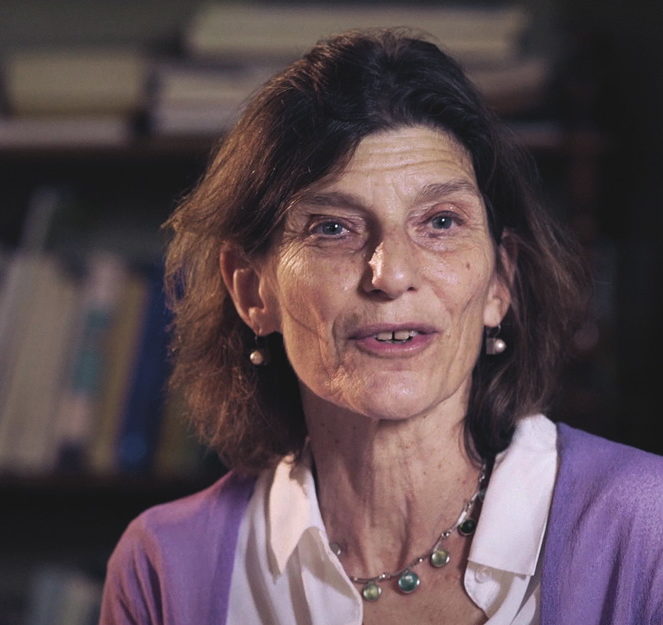Gained in translation
When we immerse ourselves in a book, it’s easy to forget it might not have originally been written in English
When unsuspecting readers peer behind the saccharine paperback covers of women in wedding dresses and children in fairy wings to find intense, rage-fuelled, apparently confessional prose in Elena Ferrante’s Neapolitan Quartet, the author’s anonymity begins to make sense.
“I don’t know Ferrante’s true identity. I didn’t consult her a lot in the translation of her novels.”
With the books’ geographical and historical accuracy, pseudonymous self-preservation seems like basic common sense. And yet readers, after spending 1,700 pages and 60 years with her seemingly autobiographical characters, are hungry to know more.
Ferrante’s unanswered questions have fallen to Ann Goldstein, the former New Yorker editor and her translator into English, who has risen to almost celebrity status to become not only the face of Ferrante but the face of translation as well.
“Certainly it’s not a role I ever expected to be in,” Goldstein tells Big Issue North. “But I would say that over the years I’ve become more comfortable with it, in part because it’s given me an opportunity to speak for all translators, for translation in general, and remind readers that in addition to the author someone else has brought them the book they are reading.”
Goldstein only started learning Italian in her thirties, when classes were offered to her as part of her career development at the New Yorker. As an editor she says it helped her improve her English – her knowledge of grammar and structure – and sharpened her style.
“I don’t know that it took special dedication: dedication is required to accomplish anything,” she says of getting to the level of translating novels. “It was harder to learn than if, say, I had grown up speaking and reading Italian – that is certainly true. And I made a conscious decision to learn the language, to study, to read, to go to Italy.”
Dedicated Ferrante readers describe feeling bereft on finishing her novels, even after wishing to get away from the intense and violent prose that lurks under the soapy surface. Does it have an even more extreme impact on the translator?
“As a translator, being immersed in anyone’s prose has an impact, in that you’re sort of always carrying it in your head. And sometimes you’d like to get away from it. But most of the time when you’re working you have to keep some sort of detachment, because you are operating, in a sense, on the words and the sentences.”

Does deconstructing the language, then, create a distance between Goldstein and the characters of Lina and Lenu?
“I don’t feel exempt from their spell; or maybe I should say that when I am translating a first-person novel I find it hard not to identify with the narrator, at least on some level. And although you’re right – I am working in detail on the language, on the level of the words and the meaning of the words – I’m also working on sentences and paragraphs, and it’s hard not to be in the mind of the person telling the story.”
But even for Goldstein, who’s spent 15 years in the author’s mind, she remains a mystery. “I don’t have a direct relationship with Ferrante. When I have questions I send them to Ferrante’s Italian editors, and they pass them on to her. I don’t know her true identity. I didn’t consult her a lot in the translation of her novels, but there was a bit more back and forth when she was writing the Guardian columns, I think probably because they were so short and compressed.”
In her memoir The Years, French author Annie Ernaux, like Ferrante, depicts an evolving society via the interior life of a woman. Its skilful translation into English by Canadian writer Alison Strayer has brought Ernaux overdue international recognition. This year the book was shortlisted for the Man Booker International Prize.
“It is an extraordinary tribute to translation and undoubtedly it has raised awareness of, and interest in translation as a métier,” Strayer tells Big Issue North. “Other forms of recognition are increasing too – regular publications of translations through specialised journals, online magazines and blogs. It seems to me there are far more commentators, admirers and bloggers who are truly engaged in translation.”
Strayer didn’t start learning French until middle school when she moved to central Canada from the Prairies. She began living in Paris in 2001 after marrying a local.
“I arrived in Paris with a knowledge of French language and literature, as well as work experience. I did general freelance translation – very little literature; I’d have liked to do more. Looking for work has always been part of the job, as it is for all translators I know.”
Speaking to Big Issue North on the release of her book Happening earlier this year, Ernaux said she trusted her translator without trying to intervene in the work, even if she knows the language a little. “But if he or she wants to ask me questions about a word, an expression, a historical detail, I willingly answer. Both attitudes – of consulting me or not – seem legitimate to me. It is certainly an act of faith, though not blind faith, knowing that the editor chooses someone he knows is capable.”
Strayer describes their relationship as harmonious and companionable, conducted largely over email. The translator accumulates a group of questions that she only sends to the author after exhausting all other resources.
“Annie was warm in her praise of The Years. I feel her trust and support, which benefits me greatly in the work, and I feel very lucky for this,” says Strayer, who travelled by train with the author to the Man Booker International awards last month. There is another aspect to her relationship with Ernaux.
“It has to do with my having been a reader and admirer of her work for about 25 years. I feel a great deal of affinity with her writing, and a certain gratitude towards it, as I am sure many of her readers do. One cannot help but feel that a writer like Annie Ernaux, who works so unremittingly to seek and convey the truth of self, somehow speaks for oneself.”
She believes living in Paris has been vital in translating Ernaux, and works well on the Paris metro, which reminds her of the author, who uses it as a social barometer. “The prerequisite for me was total immersion.”
It’s a conclusion shared by Lina Wolff, the Swedish writer of The Polyglot Lovers who has lived in Spain and Italy and is currently working on a Swedish translation of Gabriel Garcia Marquez’s One Hundred Years
of Solitude.
“When I went to interpreters and translators’ school in Florence, one of our teachers told us that in order to be a translator you have to live at least five years in the country of the original language and read a lot in that language. She gave us endless lists of the books we had to read in each,” says Wolff.
“At the time I thought it was exaggerated but now I believe it’s true. A new language, when you learn it in depth and staying for a long time in the country, provides you with a second soul. That is for me the true polyglossia – the capacity of seeing things in a completely new way, for good and bad. It almost makes you change your personality when you go from one country to another.”
For Wolff, translation is an art just as writing is, but more complex. “You are responsible for the good birth of the text in your own language. There are so many aspects to be considered when doing this. One of the first is the relationship between writer and translator. When I work with the translators of my own books, I think it is natural that they shall have the last word, the ultimate power over the text. One of the most important qualities of a translated text is the security of the tone or the voice in the new language, and if you, as a translator, feel insecure about your role in the text, that security might be lost. You translate a work, not only a language or a writer.
“I have only translated writers that I admire deeply, and when I translate them, I admire them even more. It is a wonderful way not to stop growing as a writer and to continue to reflect on language, plot and drama from the very inside of the text.”
The process is a painstaking one. Strayer describes the manuscript as a construction site – in double-spaced printouts with abundant scribbles in the margins and between the lines.
“Sometimes the first try at a sentence is the one that sticks but that is a happy accident,” she says. “I do first drafts very methodically, translating virtually word by word, keeping original clause order. I have the book next to me at all times so I can look at the original French sentence, or even read it out loud. This is to make sure I have a version that conveys the author’s original meaning pretty much as it was stated in French.
“Gradually, I start to work on bigger sections – paragraphs, pages, four-page episodes – to check how they hang together and work on that. By then I know the stumbling blocks by heart, and carry them around with me in my head for most of the day. I generally find solutions when I am doing anything but sitting at my desk.”
For Goldstein, the main challenge is the most obvious: “to convey something from one language, with its literal and figurative meanings, cultural and historical nuances, into another language, whose culture and history and traditions are different. For example, just on the level of individual words, it is unlikely that the translator will find a word in
the target language that has all the nuances and connotations of the word in the original, so you have to choose which of those nuances you think is most important.”
She provides an example from My Brilliant Friend. “In the passage where Lila and Lenu have decided to skip school and go to the sea there is the sentence ‘Procedemmo tesissime’ – literally, ‘We proceeded, very tense.’”
But Goldstein says the use of the superlative adjective would be awkward in English in a way that the Italian is not. “So I decided to make it an adverb, which would be more natural in English, and in the end I chose ‘apprehensively’, because it seemed to combine the ideas of tension and nervousness, without needing the intensifying ‘very.’”
Strayer says it’s inevitable that something – much perhaps – is lost in translation.
“But something is also found – something inside a book that might surface in a different way in a different language, take on a new form or flavour. A sort of reinvention by dint of language difference, of the strictures and the liberties of the target language, rather than any personal desire on the part of the translator to alter an author’s book.”
Read Q&As with Lina Wolff and Annie Ernaux in the Reading Room

Leave a reply
Your email address will not be published.